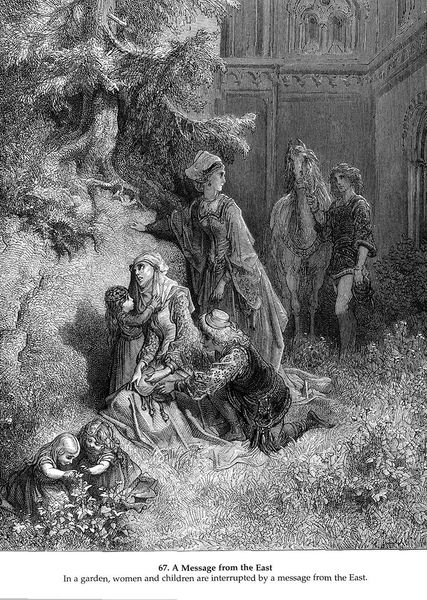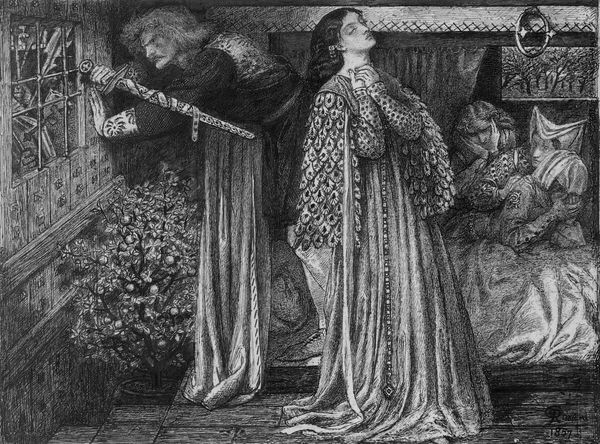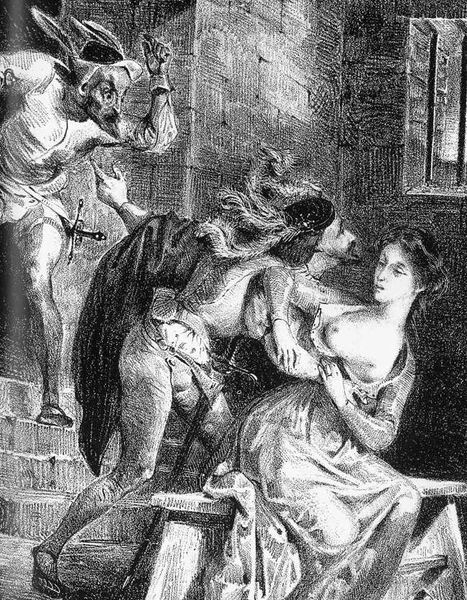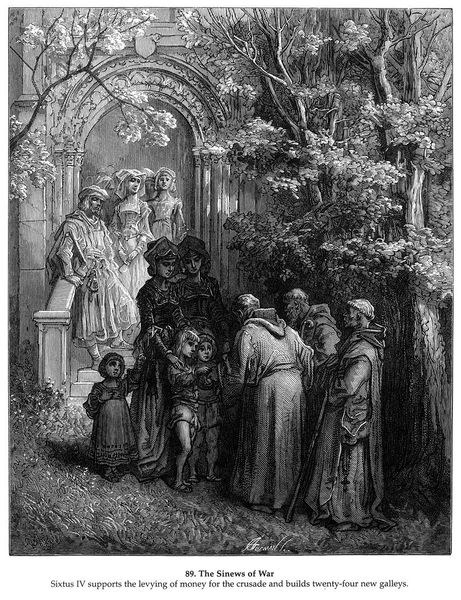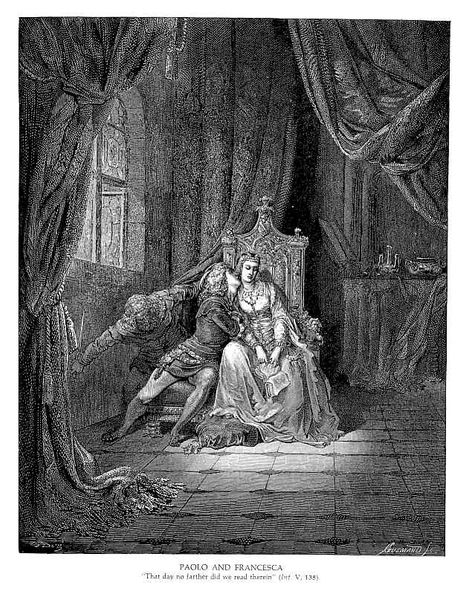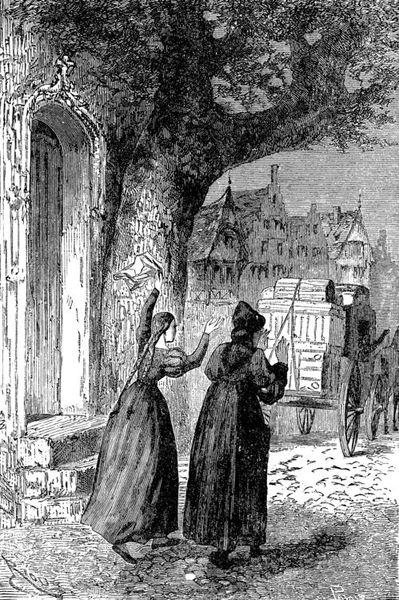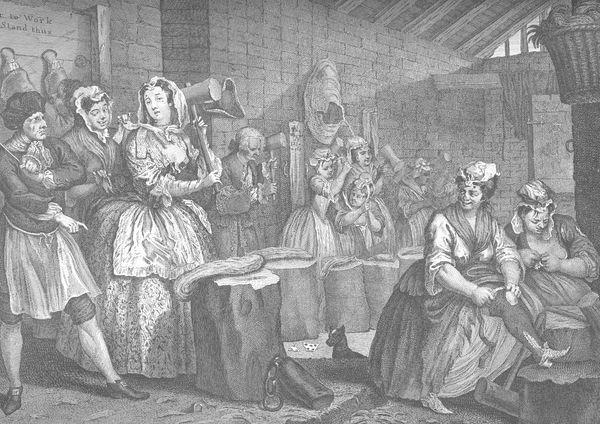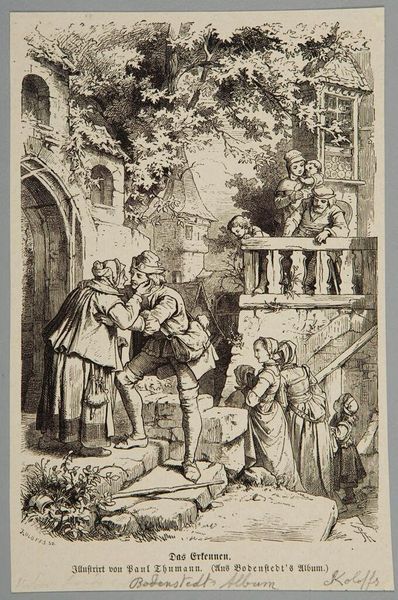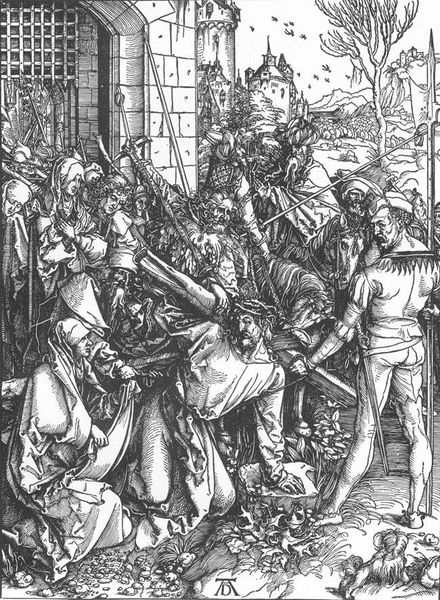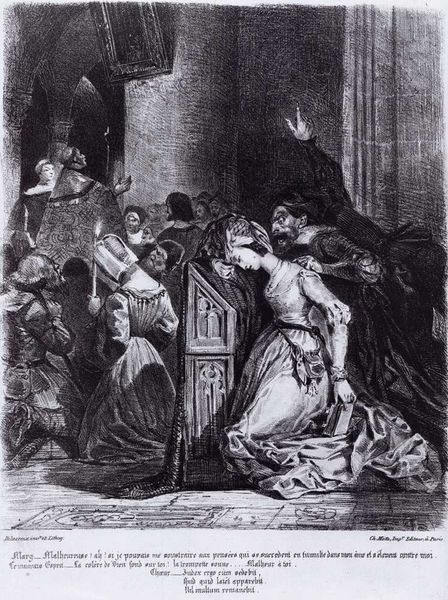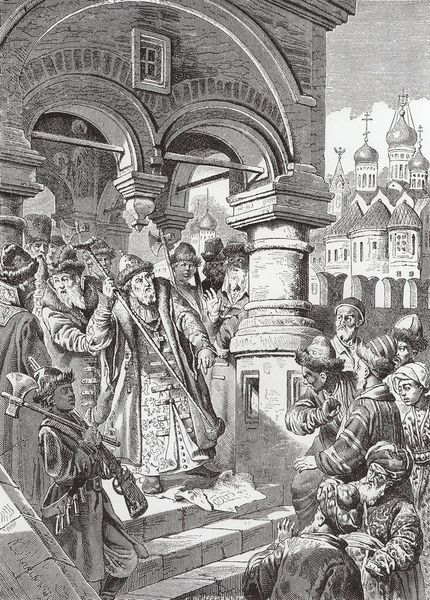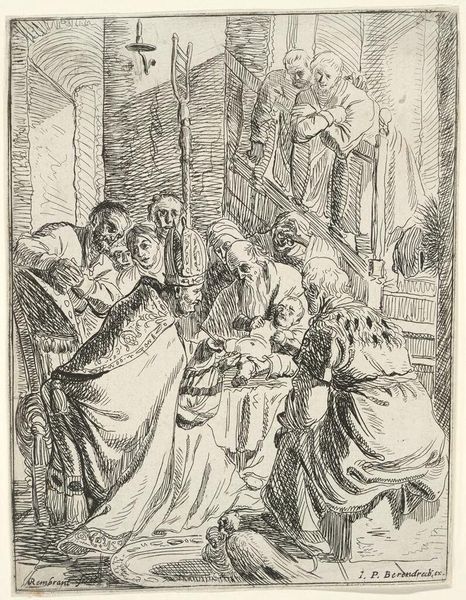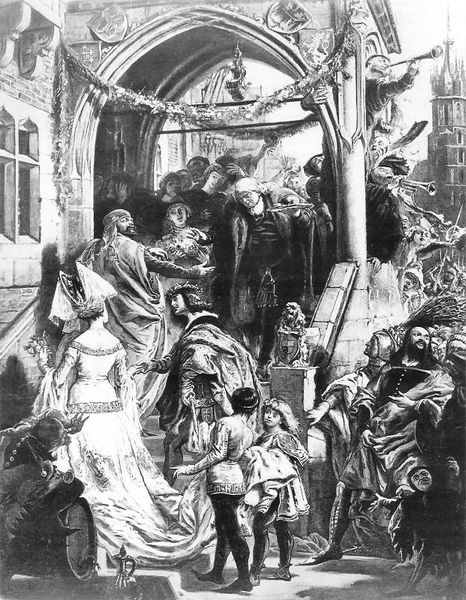
Mary Magdalene at the door of Simon the Pharisee 1853
0:00
0:00
dantegabrielrossetti
Fitzwilliam Museum (University of Cambridge), Cambridge, UK
Dimensions: 54 x 47.7 cm
Copyright: Public domain
Editor: Rossetti's "Mary Magdalene at the door of Simon the Pharisee", an ink drawing from 1853, feels incredibly intricate. The scene is so crowded, almost claustrophobic, but then there's this calm figure of Christ in the window. What’s your interpretation of this contrast? Curator: The crowding and detail are key. Rossetti and the Pre-Raphaelites were fascinated by the medieval world, imagining it as simultaneously chaotic and deeply spiritual. This piece really emphasizes the social role of repentance. Mary Magdalene is at the fringes, literally on the doorstep, attempting to re-enter society. Notice how the figures closest to her react – with disdain, curiosity, pity? Editor: Yes, it’s like there's a whole hierarchy being presented! How does Christ’s presence in the window play into this social dynamic? Curator: The window creates a fascinating distance. Is Christ truly separate from their world, an unattainable ideal? Or is Rossetti suggesting that spirituality should permeate even the most enclosed social circles? Consider the way religious narratives were being depicted at the time; less about divine power and more about personal and societal transformation. Editor: So, Rossetti’s challenging the idea of religious experience as something removed, suggesting it's something we have to grapple with within our own social realities? Curator: Precisely. And who gets to define what's acceptable within those social realities? Is Magdalene being judged fairly, or are these social constructs arbitrary? These were the kind of questions Rossetti wanted his audience to consider, questions about social justice framed within familiar religious iconography. Editor: I hadn't thought about it as a challenge to social norms. I initially focused on the intimate scene with Mary Magdalene but understanding the social and historical context brings a whole new layer to my understanding. Curator: And that, of course, is why historical analysis is vital; it keeps our understanding of art ever-evolving.
Comments
No comments
Be the first to comment and join the conversation on the ultimate creative platform.
